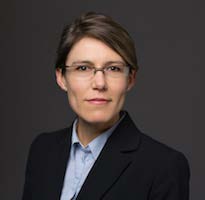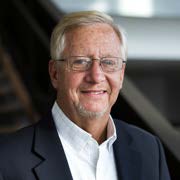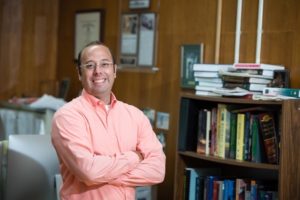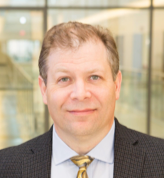 The talk will focus on two themes. The first will be an overview of our current ARPA-E project to condense water from flue gas for dry-cooled power plants power plants. Water use by power plants is an increasing concern across the U.S., and is particularly problematic in arid regions, such as the southwest. In this project, an advanced two-phase thermosyphon concept is employed that removes several of the traditional limitations of conventional thermosyphons. The condensed water can be used to pre-cool the condenser air to reduce the effective ambient temperature, for turbine inlet air evaporative cooling, or for other uses in the plant, as needed. The second portion of the talk will provide a short overview of other energy-related research activities in the Mechanical Engineering department at Stony Brook University with the goal to explore future opportunities for collaboration and joint projects between both institutions.
The talk will focus on two themes. The first will be an overview of our current ARPA-E project to condense water from flue gas for dry-cooled power plants power plants. Water use by power plants is an increasing concern across the U.S., and is particularly problematic in arid regions, such as the southwest. In this project, an advanced two-phase thermosyphon concept is employed that removes several of the traditional limitations of conventional thermosyphons. The condensed water can be used to pre-cool the condenser air to reduce the effective ambient temperature, for turbine inlet air evaporative cooling, or for other uses in the plant, as needed. The second portion of the talk will provide a short overview of other energy-related research activities in the Mechanical Engineering department at Stony Brook University with the goal to explore future opportunities for collaboration and joint projects between both institutions.
Bio: Jon Longtin joined the Mechanical Engineering Faculty at Stony Brook University in 1996. He came to Stony Brook after receiving his Ph.D. degree in 1995 from U.C. Berkeley, followed by a one-year postdoc at the Tokyo Institute of Technology in Japan. His research interests include energy conservation, innovative energy transfer and storage, and energy monitoring and diagnostics, as well as laser materials processing, particularly with ultrafast lasers and the development of sensors for harsh environments. His research has been funded by NSF, DOE, DOD, NASA, NYSERDA, and a variety of industrial sources. He is the author of over 140 technical publications and holds 11 issued and pending patents. He has received the Presidential Early Career Award for Scientists and Engineers, two Excellence in Teaching Awards, and an R&D 100 award. He is a licensed Professional Engineer in New York State and serves as a technical advisor to a variety of companies and non-profit organizations.
 The U.S. Army Research Laboratory (ARL) was activated 25 years ago with a mission to discover, innovate and transition science and technology to ensure dominant strategic land power. One of key research strategies at ARL is a development of superior protection systems for individual warfigter and vehicles. The protective systems often use polymers due to their low weight, good strength and toughness which improves resistance to ballistic penetration.
The U.S. Army Research Laboratory (ARL) was activated 25 years ago with a mission to discover, innovate and transition science and technology to ensure dominant strategic land power. One of key research strategies at ARL is a development of superior protection systems for individual warfigter and vehicles. The protective systems often use polymers due to their low weight, good strength and toughness which improves resistance to ballistic penetration. Abstract: This presentation is focused on Isogeometric Analysis (IGA) with applications to solids and structures, starting with early developments and results, and transitioning to more recent work. Novel IGA-based thin-shell formulations are discussed, and applications to progressive damage modeling in composite laminates due to low-velocity impact and their residual-strength prediction are shown. Fluid–structure interaction (FSI) employing IGA is also discussed, and a novel framework for air-blast-structure interaction (ABSI) based on an immersed approach coupling IGA and RKPM-based Meshfree methods is presented and verified on a set of challenging examples. The presentation is infused with examples that highlight effective uses of IGA in advanced engineering applications.
Abstract: This presentation is focused on Isogeometric Analysis (IGA) with applications to solids and structures, starting with early developments and results, and transitioning to more recent work. Novel IGA-based thin-shell formulations are discussed, and applications to progressive damage modeling in composite laminates due to low-velocity impact and their residual-strength prediction are shown. Fluid–structure interaction (FSI) employing IGA is also discussed, and a novel framework for air-blast-structure interaction (ABSI) based on an immersed approach coupling IGA and RKPM-based Meshfree methods is presented and verified on a set of challenging examples. The presentation is infused with examples that highlight effective uses of IGA in advanced engineering applications.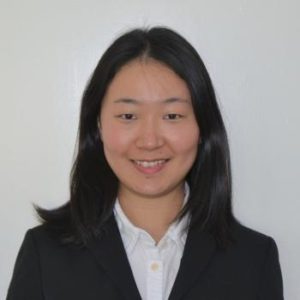
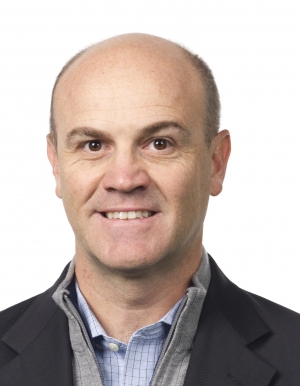 Beyond the mere notion of a material, metastructures draw their unique characteristics from their finite size and the existence of interfaces. The resulting structural assemblies feature unprecedented performance in terms of stress wave mitigation, wave guiding, acoustic absorption, and vibration isolation.
Beyond the mere notion of a material, metastructures draw their unique characteristics from their finite size and the existence of interfaces. The resulting structural assemblies feature unprecedented performance in terms of stress wave mitigation, wave guiding, acoustic absorption, and vibration isolation.
